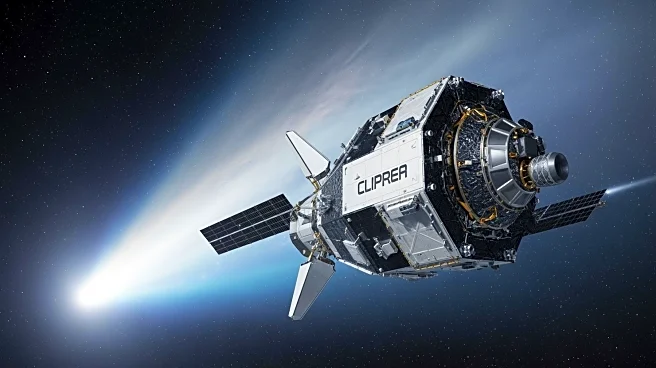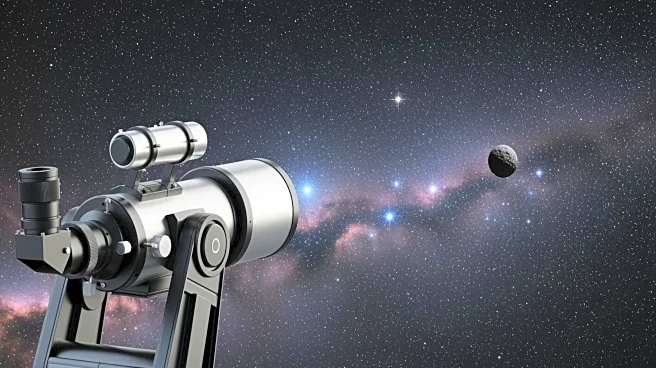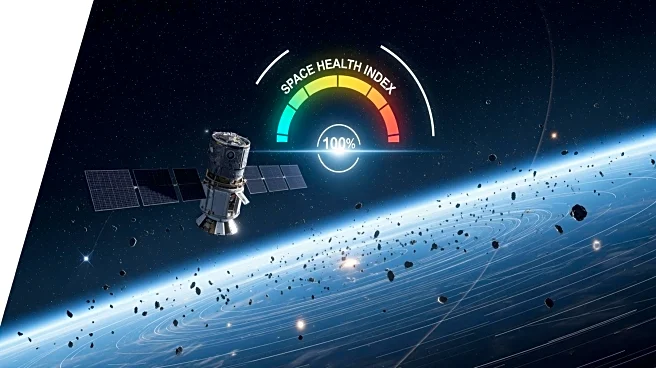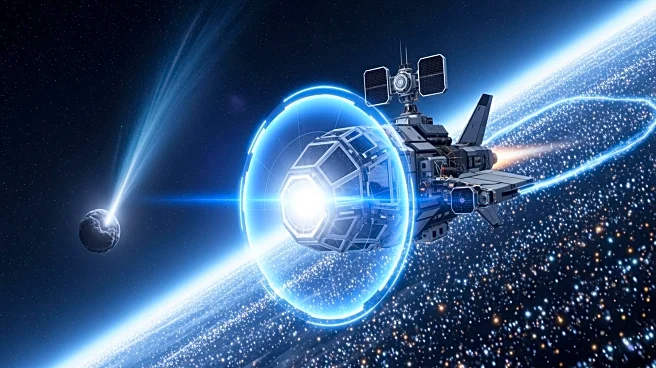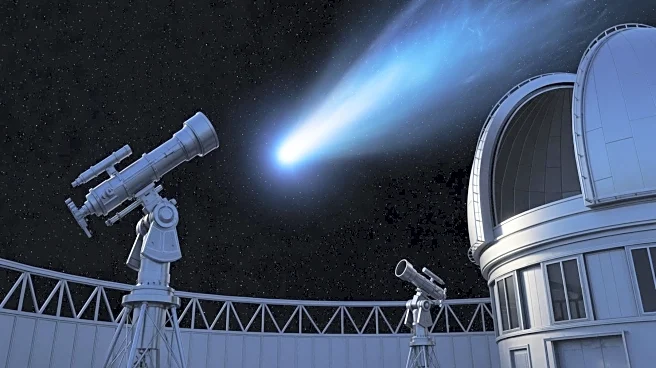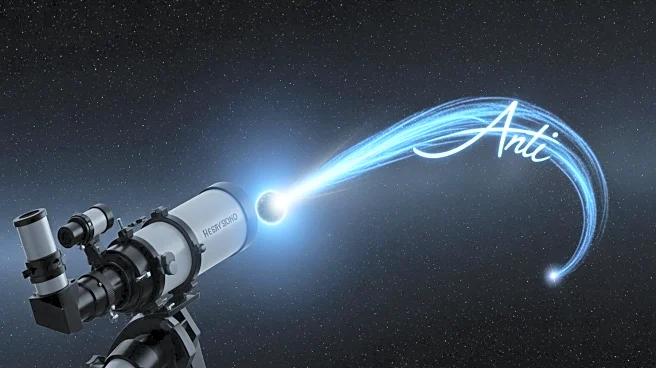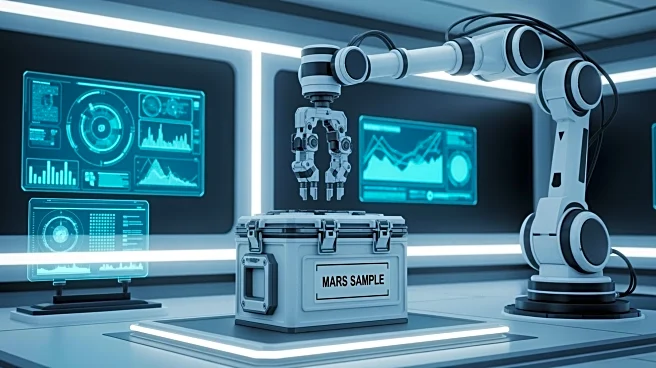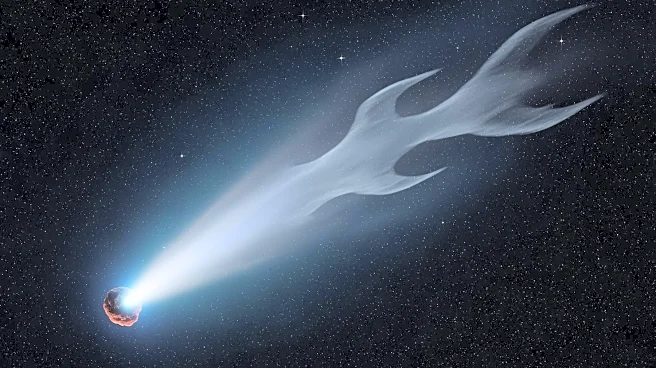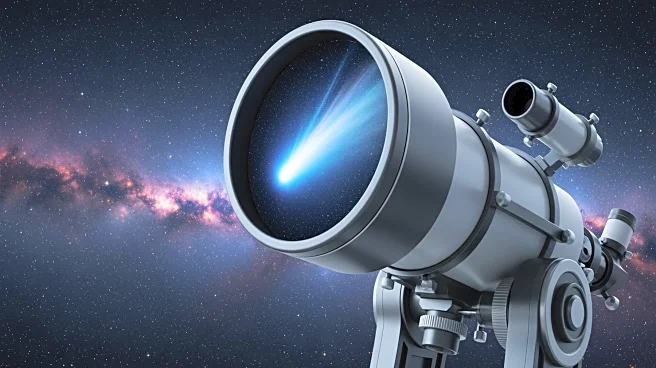What's Happening?
NASA's Europa Clipper spacecraft, which is on a mission to study Jupiter's icy moon Europa, might soon pass through the ion tail of an interstellar comet named 3I/ATLAS. This potential encounter, predicted
to occur between October 30 and November 6, 2025, presents a rare chance for scientists to analyze material from a comet that originated outside our solar system. Researchers Samuel Grant from the Finnish Meteorological Institute and Geraint Jones of the European Space Agency (ESA) have highlighted the scientific value of this event, as it could provide insights into the composition of interstellar comets and the star systems they come from. The ion tail, a stream of charged particles, could be detected by Europa Clipper's instruments, which are designed to study Jupiter's magnetic field.
Why It's Important?
This event is significant because it offers a unique opportunity to study interstellar material without launching a dedicated mission to chase the comet. Understanding the composition of interstellar comets can provide valuable information about the early solar system and the processes that formed it. The data collected could enhance our knowledge of cometary bodies, which act as time capsules preserving material from billions of years ago. The potential findings could have implications for our understanding of the galaxy and the formation of planetary systems, offering a glimpse into the building blocks of other star systems.
What's Next?
The success of this encounter depends on several factors, including the direction and strength of the solar wind and the activity level of the comet 3I/ATLAS. As the comet approaches its closest point to the sun, its activity is expected to increase, potentially widening its ion tail. If Europa Clipper successfully detects ions from the comet, it would mark a significant achievement in space exploration and cometary science. The decision to conduct these measurements rests with NASA scientists, as neither Grant nor Jones are part of the Europa Clipper team. Future missions, such as ESA's Comet Interceptor set to launch in 2029, aim to directly study comets from other star systems.
